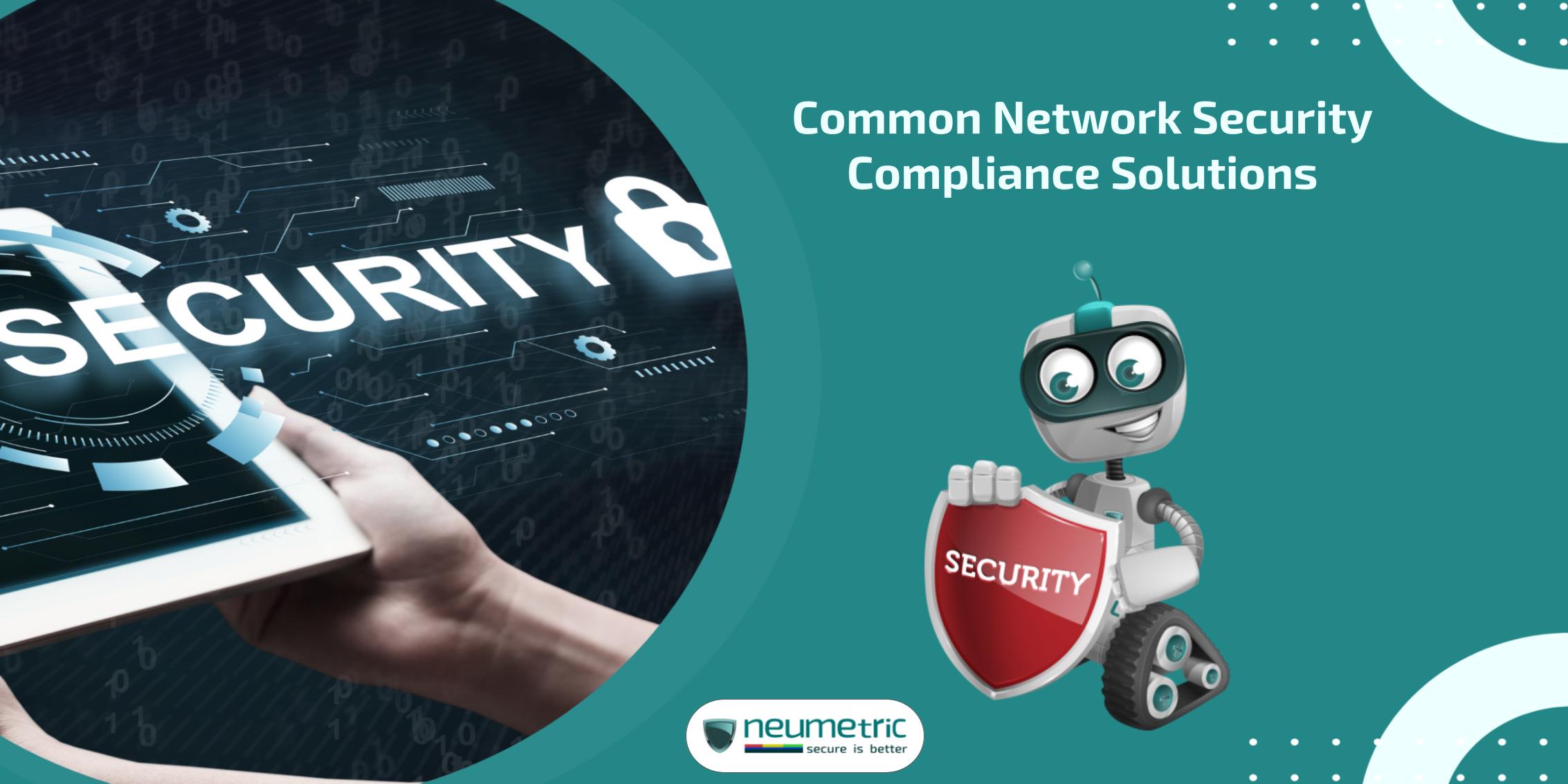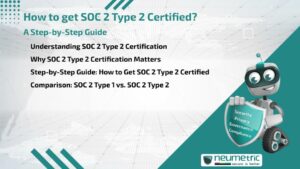Table of Contents
ToggleCommon Network Security Compliance Solutions
Introduction
Network security compliance is the cornerstone of cybersecurity frameworks within organizations, encompassing a series of policies, procedures & technical measures designed to safeguard digital assets, sensitive data & network infrastructure. At its core, it ensures adherence to regulatory standards & industry best practices, aiming to prevent unauthorized access, data breaches & cyber threats.
The importance of network security compliance cannot be overstated in today’s digital landscape. It serves as a proactive defense mechanism against cyber threats, protecting organizations from financial losses, reputational damage & legal liabilities. Compliance frameworks provide a structured approach to cybersecurity, instilling confidence in customers, stakeholders & regulatory authorities.
This comprehensive journal aims to delve into the multifaceted realm of network security compliance. It will explore the definition & scope of compliance, regulatory frameworks such as GDPR & HIPAA, common challenges faced by organizations, key components of compliance solutions, implementation strategies, monitoring techniques, emerging trends & regulatory updates. By dissecting these aspects, readers will gain valuable insights into building robust compliance programs to fortify their network infrastructure & navigate the complex landscape of cybersecurity regulations effectively.
Understanding Network Security Compliance solutions
Network security compliance solutions encompasses a broad spectrum of activities aimed at safeguarding the Confidentiality, Integrity & Availability [CIA] of network resources. It involves implementing security controls, enforcing policies & adhering to regulatory requirements to protect against unauthorized access, data breaches & cyber attacks.
Numerous regulatory frameworks dictate network security compliance across various industries & geographic regions. The General Data Protection Regulation [GDPR] governs data protection & privacy in the European Union [EU], while the Health Insurance Portability & Accountability Act [HIPAA] regulates healthcare data security in the United States. Additionally, the Payment Card Industry Data Security Standard [PCI DSS] outlines requirements for securing payment card information.
Compliance is vital for organizations to demonstrate accountability, uphold trust & mitigate risks associated with cybersecurity threats & regulatory non-compliance. It provides a framework for implementing effective security measures, protecting sensitive data & maintaining regulatory adherence.
Common Challenges in Network Security Compliance solutions
One of the primary challenges in network security compliance solutions is the complexity of regulatory frameworks. Organizations must navigate a labyrinth of laws, standards & industry-specific requirements, often leading to confusion & compliance fatigue. The constantly evolving threat landscape presents a formidable challenge for network security compliance. Cybercriminals employ sophisticated tactics & exploit vulnerabilities in network infrastructure, necessitating proactive measures to stay ahead of emerging threats.
Resource constraints, including budgetary limitations & a shortage of skilled cybersecurity professionals, pose significant obstacles to achieving & maintaining network security compliance. Limited resources hinder organizations’ ability to implement robust security measures & allocate sufficient funds for compliance initiatives.
Key Components of Network Security Compliance Solutions
Access control measures form the cornerstone of network security compliance, governing the authentication & authorization of users accessing network resources.
- Role-Based Access Control [RBAC]: RBAC assigns permissions to users based on their roles & responsibilities within the organization, ensuring that they only have access to the resources necessary to perform their job functions.
- Privileged Access Management [PAM]: PAM controls & monitors access to privileged accounts, such as administrator & root accounts, to prevent unauthorized access & mitigate insider threats.
Encryption plays a crucial role in protecting sensitive data from unauthorized access & disclosure. Encryption techniques using Transport Layer Security [TLS] & Secure Sockets Layer [SSL] encrypt data transmitted over the network, safeguarding it from interception & eavesdropping. Full Disk Encryption [FDE] encrypts the entire contents of a disk or storage device, ensuring that data remains secure even if the device is lost or stolen.
Regular security audits & assessments are essential for evaluating the effectiveness of security controls & identifying vulnerabilities in network infrastructure. Regular audits help organizations assess their compliance with regulatory requirements & industry standards, identify gaps & implement remediation measures.
Penetration testing simulates real-world cyber attacks to identify weaknesses in network defenses & improve overall security posture. Employee training & awareness programs educate staff about cybersecurity best practices & the importance of compliance.
Security awareness programs raise awareness about cybersecurity threats, social engineering tactics & safe computing practices, empowering employees to recognize & report suspicious activities. Phishing simulations simulate real phishing attacks to assess employees’ susceptibility to social engineering attacks & reinforce training efforts.
Implementing Network Security Compliance Solutions
Establishing a Robust Compliance Framework: Establishing a robust compliance framework is essential for organizations to define policies, procedures & controls for achieving & maintaining network security compliance. This framework serves as the foundation upon which all compliance efforts are built, providing a structured approach to managing security risks & ensuring regulatory adherence.
Policy Development: Policy development is a crucial aspect of the compliance framework, involving the creation of security policies & procedures that align with regulatory requirements & industry best practices. These policies outline the organization’s stance on various security issues, such as data protection, access control & incident response. They provide clear guidelines for employees & stakeholders, outlining their roles & responsibilities in maintaining network security.
Risk Assessment: Risk assessment plays a pivotal role in identifying & evaluating potential threats & vulnerabilities to the organization’s network infrastructure. By conducting a comprehensive risk assessment, organizations can gain insight into their security posture & prioritize security investments & mitigation efforts effectively. This involves identifying assets, assessing their value & criticality, identifying potential threats & vulnerabilities & evaluating existing controls & safeguards.
Selecting the Right Compliance Tools: Selecting the right compliance tools is crucial for automating compliance management processes & ensuring adherence to regulatory requirements. Network security compliance solutions help streamline compliance efforts by centralizing policy management, risk assessment & audit management processes. They provide organizations with the necessary capabilities to track compliance activities, monitor security controls & generate reports for regulatory audits & assessments.
Network Monitoring Tools: Network monitoring tools play a critical role in maintaining network security by providing real-time visibility into network traffic. These tools monitor network activity, analyze traffic patterns & detect anomalies or suspicious behavior that may indicate a security incident. By promptly identifying & responding to security incidents, organizations can mitigate potential risks & minimize the impact of security breaches.
Compliance Management Software: Compliance management software streamlines compliance efforts by centralizing policy management, risk assessment & audit management processes. These tools provide organizations with a centralized platform to manage compliance activities, track regulatory requirements & streamline audit preparations. They automate routine tasks, such as policy updates & risk assessments, saving time & resources while ensuring consistent adherence to compliance standards.
Integrating Compliance Solutions with Existing Systems: Integrating compliance solutions with existing systems is essential for ensuring interoperability & maximizing efficiency. However, integration challenges may arise due to differences in technology platforms, data formats & communication protocols between compliance solutions & existing systems. Organizations should consider interoperability standards & protocols when selecting compliance solutions to ensure seamless integration with existing systems & applications. By integrating compliance solutions with existing infrastructure, organizations can leverage existing investments & streamline compliance management processes.
Implementing network security compliance solutions requires a comprehensive approach, encompassing policy development, risk assessment, tool selection & integration with existing systems. By establishing a robust compliance framework & leveraging the right tools & technologies, organizations can effectively manage security risks, ensure regulatory adherence & protect their network infrastructure from cyber threats.
Monitoring & Maintaining Compliance
Continuous monitoring is essential for detecting security incidents & ensuring ongoing compliance with regulatory requirements. This involves the proactive surveillance of network activities, systems & data to identify & respond to any deviations from established security policies & regulatory standards. Continuous monitoring provides organizations with real-time visibility into their network environments, enabling them to detect & respond to security threats promptly.
Intrusion Detection Systems [IDS]
Intrusion Detection Systems [IDS] are critical components of continuous monitoring efforts. These systems monitor network traffic for signs of unauthorized access, malicious activities & other suspicious behavior. IDS solutions use various detection methods, including signature-based detection, anomaly detection & behavioral analysis, to identify potential security threats. When an intrusion or suspicious activity is detected, IDS systems generate alerts & notifications, enabling security teams to investigate & respond to potential security incidents in real-time.
Security Information & Event Management [SIEM]
Security Information & Event Management [SIEM] platforms play a crucial role in aggregating, correlating & analyzing security event data from various sources across the network infrastructure. SIEM solutions collect log data, network traffic information & other security-related data to detect anomalies, patterns & trends indicative of security incidents. By centralizing security event data & applying advanced analytics & machine learning [ML] algorithms, SIEM platforms enable organizations to identify & respond to security threats more effectively. SIEM solutions also facilitate incident response by providing security teams with actionable insights & contextual information to investigate & mitigate security incidents promptly.
Incident Response
Incident response is a coordinated effort to detect, respond to & recover from security incidents to minimize their impact on network security & compliance. Effective incident response requires organizations to have well-defined incident response plans & procedures in place. These plans outline the steps, processes & protocols for responding to security incidents, ensuring a coordinated & effective response. Incident response plans typically include the following components:
Incident Detection: The process of identifying & confirming security incidents through continuous monitoring, alerts from security systems or reports from users or stakeholders.
By implementing robust incident response plans & procedures, organizations can effectively detect, respond to & recover from security incidents, minimizing their impact on network security & compliance. Incident response plans should be regularly reviewed, tested & updated to ensure their effectiveness & relevance in addressing evolving security threats & compliance requirements. Additionally, organizations should prioritize proactive measures, such as threat intelligence sharing, security awareness training & continuous security monitoring, to enhance their overall cybersecurity posture & resilience against emerging threats.
Future Trends & Challenges
Emerging technologies such as Artificial Intelligence [AI] & blockchain are poised to revolutionize network security
AI-driven solutions automate compliance management processes, improve threat detection capabilities & provide predictive insights into compliance risks.
Blockchain technology ensures data integrity & authenticity, enabling organizations to maintain tamper-proof records of compliance-related activities.
Regulatory updates & revisions pose challenges for organizations to adapt to changing compliance requirements & industry standards.
New regulations introduce additional compliance obligations & requirements, necessitating adjustments to compliance programs & procedures.Global harmonization initiatives aim to align regulatory standards & requirements across different jurisdictions, facilitating cross-border compliance efforts.
Conclusion
In conclusion, network security compliance is critical for organizations to protect their digital assets, mitigate cyber risks & maintain regulatory adherence. By addressing common challenges, implementing key components of compliance solutions & embracing emerging technologies organizations can strengthen their cybersecurity posture & ensure ongoing compliance in an ever-evolving threat landscape. Through proactive measures & strategic investments in compliance initiatives organizations can safeguard their networks & uphold trust with stakeholders, positioning themselves for long-term success in today’s digital economy.
Frequently Asked Questions [FAQ]
What is network security compliance & why is it important?
Network security compliance refers to the set of rules, regulations & practices that organizations follow to protect their digital assets & ensure adherence to industry standards & government regulations. It’s essential because it helps safeguard sensitive data, prevent cyber threats & maintain trust with customers & stakeholders. Compliance demonstrates a commitment to cybersecurity best practices & reduces the risk of financial losses, reputational damage & legal liabilities associated with data breaches & regulatory non-compliance.
What are some common challenges organizations face in achieving network security compliance?
Organizations often encounter challenges such as the complexity of regulatory frameworks, the rapidly evolving threat landscape & resource constraints. Navigating through a maze of laws & standards can be daunting, leading to compliance fatigue & confusion. Additionally, cyber threats are constantly evolving, making it challenging to stay ahead of emerging risks. Limited resources, including budget constraints & a shortage of skilled cybersecurity professionals, further complicate compliance efforts. Overcoming these challenges requires a proactive approach, strategic investments in cybersecurity & collaboration across departments.
How can organizations ensure they have effective network security compliance solutions in place?
To ensure effective network security compliance organizations should implement a combination of access control measures, encryption techniques, security audits, employee training, compliance management software & integration strategies. Access control measures such as role-based access control [RBAC] & Privileged Access Management [PAM] help enforce security policies & restrict unauthorized access to sensitive data. Encryption techniques such as data encryption (example: TLS & SSL) & disk encryption (example: FDE) protect data in transit & at rest, mitigating the risk of data breaches. Regular security audits, penetration testing & employee training programs enhance security awareness & identify vulnerabilities. Leveraging compliance management software streamlines compliance efforts, while integration with existing systems ensures interoperability & efficiency. By adopting these measures & staying abreast of emerging trends & challenges organizations can maintain robust network security compliance.





